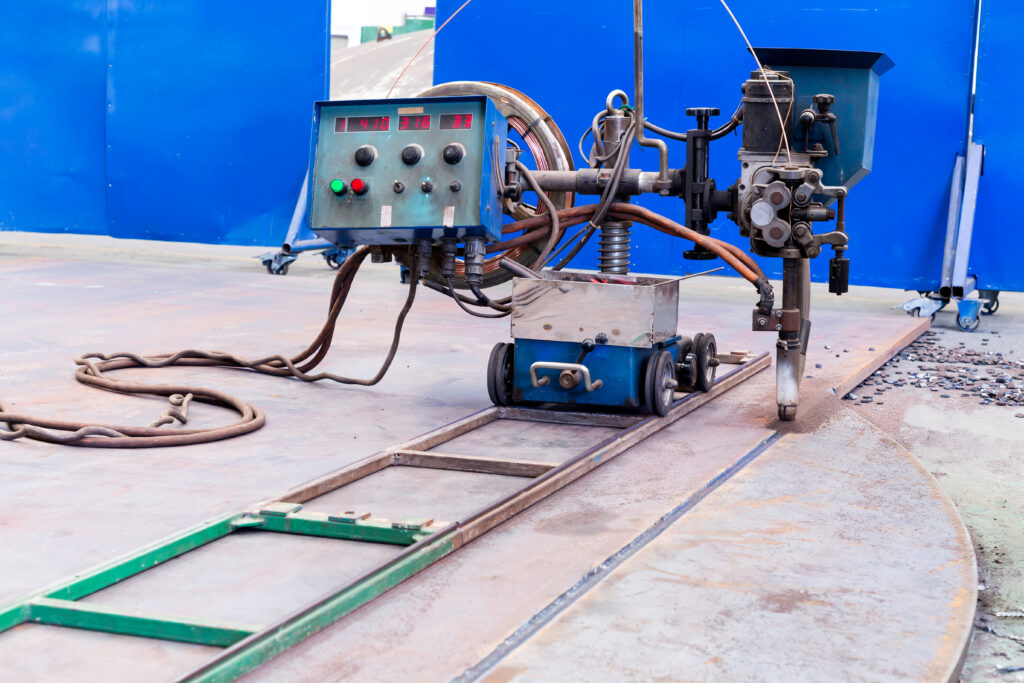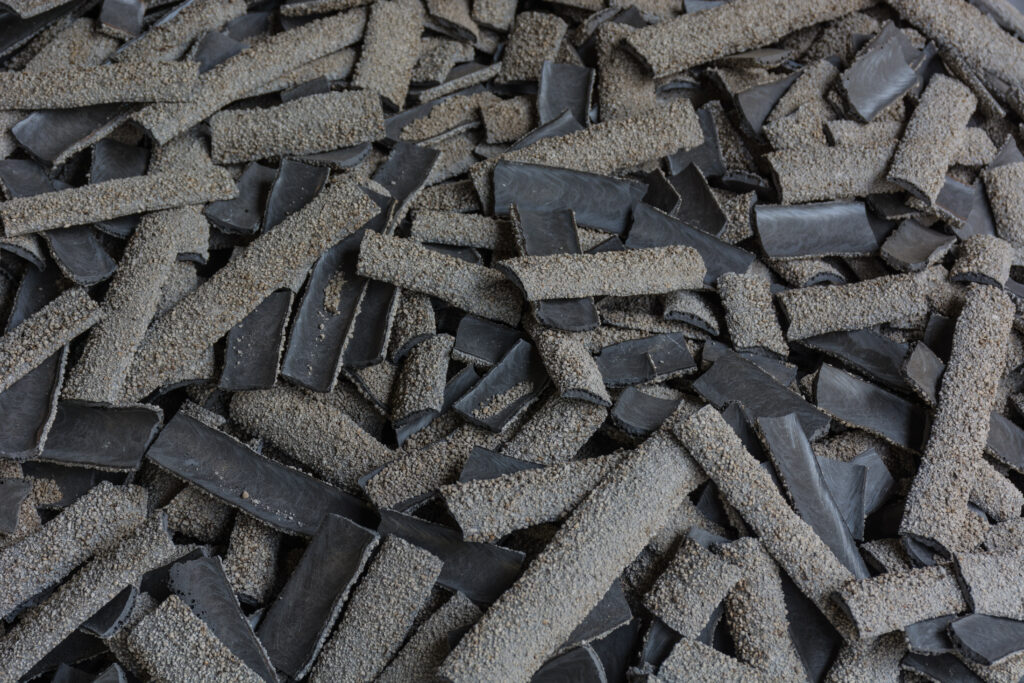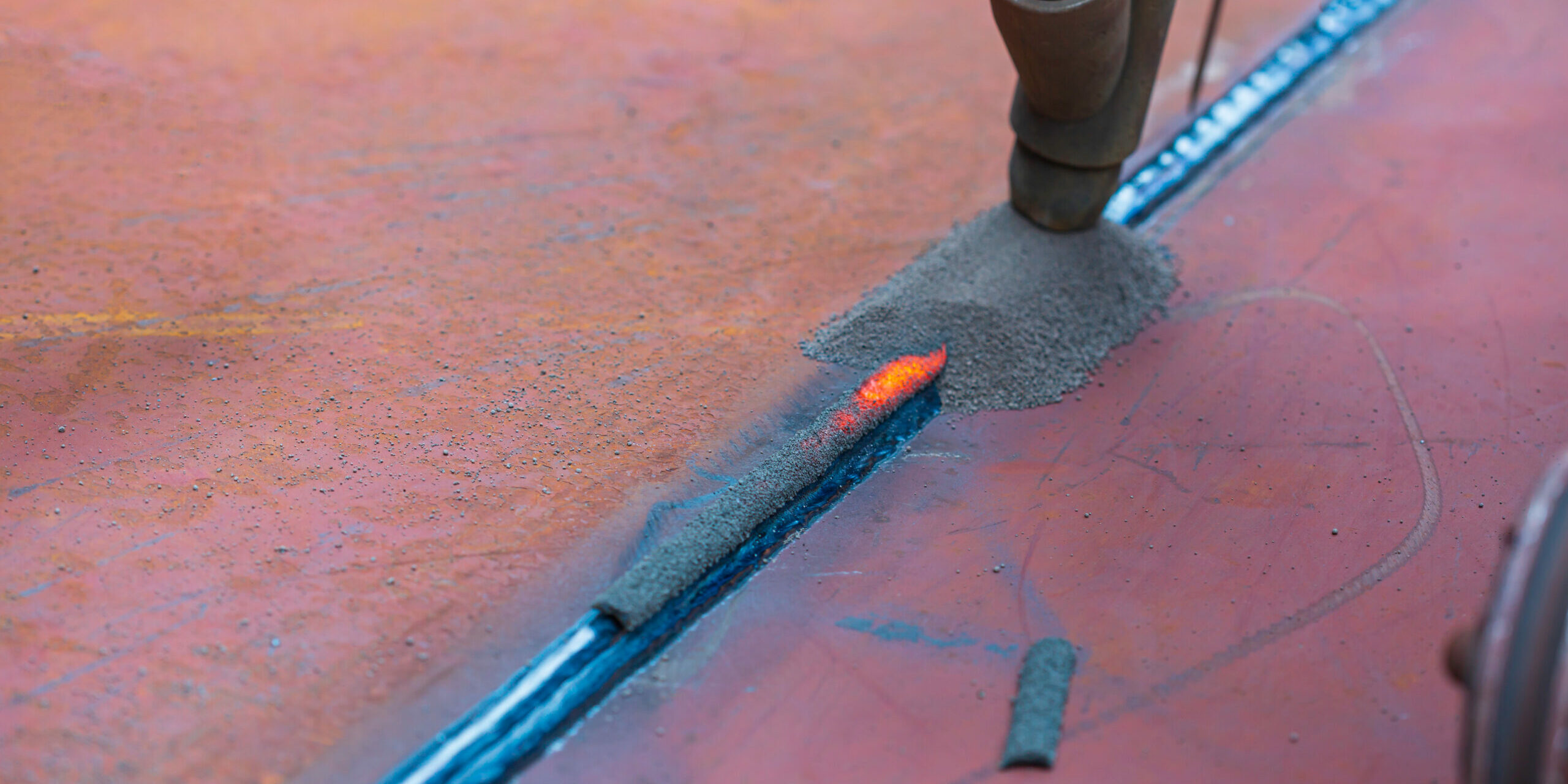Submerged Arc Welding is a versatile and efficient welding technique widely used in industrial applications. This process is popular in heavy industries such as shipbuilding, pressure vessel fabrication, and structural engineering due to its high deposition rates and quality welds. However, like any other welding method, it comes with its own set of advantages and disadvantages that you will find in this article.
What is Submerged Arc Welding?
Submerged Arc Welding (SAW) is an arc welding process in which a continuously fed consumable electrode and the workpiece are joined through the formation of an electric arc. The arc is completely submerged under a layer of granular flux, which melts as the arc generates heat.
The flux forms a protective slag over the molten weld pool, shielding it from atmospheric contamination, stabilizing the arc, and preventing spatter. Once the weld solidifies, the slag is removed, leaving a high-quality, clean weld. This technique is commonly used for high-efficiency welding of thick materials in horizontal or flat positions.
Advantages of Submerged Arc Welding
1) High deposition rates
SAW offers one of the highest deposition rates among arc welding processes. The ability to continuously feed the electrode and the efficient arc energy utilization ensures fast welds, making SAW ideal for large-scale projects. This high efficiency leads to increased productivity and reduced labor costs.
2) Deep weld penetration
The process provides deep penetration, which is crucial for welding thick plates and heavy-duty materials. This allows for fewer passes to achieve full fusion, improving speed and reducing the amount of filler material required.
3) High-quality welds
One of the standout benefits of SAW is its ability to produce high-quality welds with minimal defects. The protective flux layer shields the weld pool from atmospheric contamination (like oxygen and nitrogen), which reduces the likelihood of weld defects such as porosity or slag inclusions. The slag formed is also easily removable after welding.
4) Minimal operator fatigue

Since the arc is submerged under the flux and no direct visibility is required, there is minimal need for operator intervention during the process. Automated or semi-automated equipment can handle much of the welding process, reducing operator fatigue and the risk of exposure to welding fumes or radiation.
5) No need for gas shielding
Unlike other processes such as Gas Metal Arc Welding (GMAW) or Gas Tungsten Arc Welding (GTAW), SAW does not require an external shielding gas. The flux itself provides all the necessary protection for the weld pool, making it cost-effective and suitable for outdoor environments where wind might disrupt gas shielding.
6) Less welding spatter and fumes
The submersion of the arc beneath the flux blanket leads to a cleaner working environment with minimal spatter and fewer welding fumes. This helps create a safer, more comfortable environment for workers and reduces the need for post-weld cleaning.
Disadvantages of Submerged Arc Welding
1) Limited to flat and horizontal welds
One of the most significant limitations of SAW is its restriction to flat or horizontal welding positions. Due to the molten slag’s tendency to flow, the process is not suitable for vertical or overhead welding, which reduces its versatility compared to other welding processes.
2) Requires joint preparation
Proper joint preparation is critical for successful SAW. The deep penetration of the arc requires precise alignment and gap control between workpieces, which can add extra time and cost to the pre-welding stage. Thick plates may need beveling, further increasing setup time.
3) Bulk and mobility issues
SAW equipment can be bulky and difficult to move. This makes it less suitable for small, confined spaces or fieldwork where mobility and flexibility are essential. The use of heavy and large automated machines limits its application to workshop-based operations, particularly for long, uninterrupted welds.
4) High initial setup costs
While the high efficiency of SAW makes it cost-effective in the long run, the initial setup and equipment costs can be high. Automated systems and SAW-specific machines represent a significant investment for companies, particularly smaller businesses or projects with limited budgets.
5) Difficulty in welding thin materials
SAW is best suited for thicker materials, typically greater than 5mm. When welding thinner sections, the process can cause burn-through or excessive heat input, leading to warping or other defects. This limits its use in industries or applications where thin materials are common.
6) Slag removal required
While the slag provides excellent protection during the welding process, it must be removed after each pass. Although the slag is usually easy to remove, it still adds an additional step to the overall welding process. In multi-pass welds, this can become labor-intensive and time-consuming.

|
Submerged Arc Welding |
|
|
ADVANTAGES |
DISADVANTAGES |
|
High deposition rates |
Limited to flat and horizontal welds |
|
Deep weld penetration |
Requires joint preparation |
|
High-quality welds |
Bulk and mobility issues |
|
Minimal operator fatigue |
High initial set up costs |
|
No need for gas shielding |
Difficulty in welding thin materials |
| Less welding spatter and fumes |
Slag removal required |
Final thoughts on Submerged Arc Welding (SAW)
Submerged Arc Welding (SAW) is an effective, high-efficiency welding process with clear advantages, especially in heavy-duty applications. Its ability to produce high-quality, deep-penetration welds at high speeds makes it a popular choice for industries requiring robust, reliable joints. However, the limitations of SAW make it essential to evaluate the specific requirements of a project before selecting this welding method.
For large-scale industrial applications where thick materials, flat welding, and high deposition rates are essential, SAW remains a good choice. But for more complex geometries, thinner materials, or when mobility is a priority, other welding techniques may prove to be a better fit.











